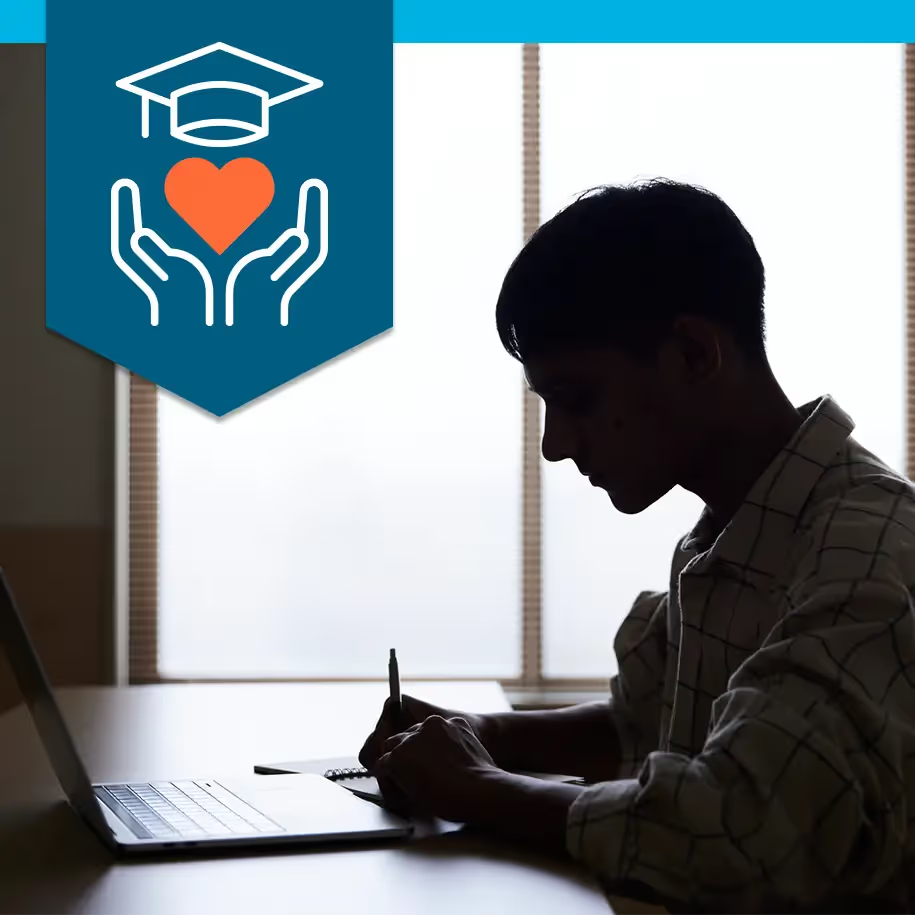
Using empathy to build meaningful coaching connections
Turning transactional encounters into transformational experiences
As a student support professional, you know the most-asked information learners need backwards and forwards — things like registration deadlines, graduation requirements and the contact information for the financial aid office. And yet you also know that if these were the only reasons learners came to talk with you, the experience would be strictly transactional. When you add the personal, human connection, you’re going beyond a course recommendation or deadline reminder. When your conversations include curiosity, building rapport, digging deeper and discussing options, you’re showing that you have strong empathy skills. And that’s what makes the connections work.

Providing information is part of the job, but as Success Coach Rodney Williams can attest, what coaches do when they interact with learners goes well beyond that. “If a coach can’t establish a genuine connection,” he says, “they won’t be able to offer genuine support.”
As professionals with more than 100 hours of training and development their first year alone, InsideTrack coaches couple our research-proven methodology with the noncognitive skills they develop during their training — meeting learners where they are, with the tools to help them advance. To teach us more about the role empathy plays in coaching, we worked with Rodney to talk us through the process.
Understanding what empathy is — and what it’s not
As Rodney explains, people often confuse sympathy and empathy. Sympathy is the observation and acceptance of what someone else is going through and often includes an internal feeling of pity for the other person. Empathy, on the other hand, is shown by providing compassion to one another, understanding how the other person feels even if those feelings are not explicitly communicated. “Empathy,” Rodney says, “is sharing in the emotional experience of other people, rather than seeing the feelings as an outsider and just labeling it.”
So how does a coach tap into empathy to make those important connections with a learner? According to Rodney, “You have to allow yourself to be available first, to be present. You have to do a great deal of active listening and allow yourself to be vulnerable too. That’s when you build authentic connections. And when you do, it impacts coaching in a really great way.”
Connecting through empathy to learn more about your learner
Using empathy to build relationships can be the gateway to finding out more about your learner. When connections are built, it’s possible to go deeper in the assessment and get to the heart of why they’re in school and what’s holding them back. When the coach leads with empathy, learners will be more open to sharing:
- What they are most excited about
- What motivates them
- What challenges them
- How they deal with anticipated challenges
- What unexpected challenges are possible, and how would they deal with each of those scenarios
- What they’re giving up by committing to complete their program
- What support they have — both in and outside of school
- What their Plan B is, if support doesn’t come through
- What’s at risk if they don’t finish school and earn their degree or credential
Rodney explains that coaching supports each individual to come up with a path forward for themselves by giving them the space and time to talk through their options and their potential roadblocks. “When you can let them know ‘Hey, I’ve been there and you are not alone,’ and really mean it, it enhances the connection — and strengthens the progress they can make.”
Each day, Rodney reflects on his work with learners. “In InsideTrack’s coaching practice, we provide a place for helping individuals envision their ideal future. It’s not about me telling them what to do. It’s not about me agreeing with every decision they make. It’s about asking questions and listening, like ‘have you considered’...? Our research-proven methodology is further enhanced when coaches use an empathetic approach to fully connect with their learners.
Insightful tips for leaning into empathy
Rodney put together a great list of real-world ways that anyone working with students can use empathy to deepen the communication — and the connection.
- Listen to the other person’s perspective — Verbally reflect what you heard and check to see if you got it right, or if they want to add anything.
- Don’t judge choices or decisions — Stay neutral and be available to provide options that haven’t been considered. Trust that the person you are talking to knows what’s best for them.
- Recognize the emotion and the challenges they’re undergoing — Breathe. Allow yourself to resonate with whatever your learner is facing. Stay grounded. Use transparency to name your own feelings if you have to and share something authentic that brings the focus to them.
- Let them know that you are available to support them moving forward, however that looks — It’s important not to move into solutions too quickly. The learner might simply need more time to talk, emote, or just be.
- Understand that you don’t have the answers — Again, transparency will be an important tool. This is a great time to state your role as a coach and, if appropriate, call out the fact that you aren’t there to supply answers, but to help the learner consider options and support them in exploring the best next steps for them.
- Tap into a similar place when you felt those emotions or felt overwhelmed — This may be easy to do or it may be outside your comfort zone. You can remain professional and still use empathy.
- Provide the support for the learner to create a plan for themselves — As a supporter, you are there to make sure the learner has all the information they need to make a decision. You can also help them tap into their own motivation to take action. Allowing the space for them to make that choice on their own ensures buy-in and a greater likelihood of follow-through. When you connect authentically, you open the door for people to share what is really going on. You’ve also earned the right to come in and ask them, “What do you plan to do?”.
- Honor the fact that everyone deals with pain and difficulty in different ways — This one can be tough. You may be able to offer resources that you know are great, but those resources may not be the best fit for the person you’re working with. It’s worth repeating — you have to trust that they know what’s best for themselves.
A powerful tool for your coaching toolkit
Rodney is quick to explain that while laying the groundwork in empathy gives you access to real communication, continuing in empathy gives the individual the opportunity and space to feel it out for themself. “This is a valuable process for whatever the learner is dealing with, but it also fosters growth,” he notes. An empathetic coaching strategy brings each learner to a place where they have the skills to:
- Connect with the people and resources they need
- Advocate for themselves
- Ask the right questions
Working directly with learners every day, Rodney knows firsthand that there are so many reasons that people don't succeed in school. “Empathy is your tool to make sure you discover the obstacles your learners are working with that may cause challenges as they work toward their dreams. You will come across a range of issues — from challenges with grades, finances, and the demands of life outside of school. There will be roadblocks that are predictable and others that come as a surprise. Some issues are a mere glitch, while others can be devastating. Regardless, leaning into empathy takes the pressure off of finding a solution. Grounding your interactions in empathy will empower your learner to access their strengths in that moment and continue to use those skills to thrive as they continue on their own path.”
Learn how an equity-first approach and understanding bias can help you stay learner-centered and more equipped to identify with the struggles your learners go through on their journey to completion.
Coaching solutions proven to advance all learners
Whether you’re looking to help students persist through completion or to improve career outcomes for job seekers and employees, our holistic coaching solutions can help you achieve meaningful outcomes.



